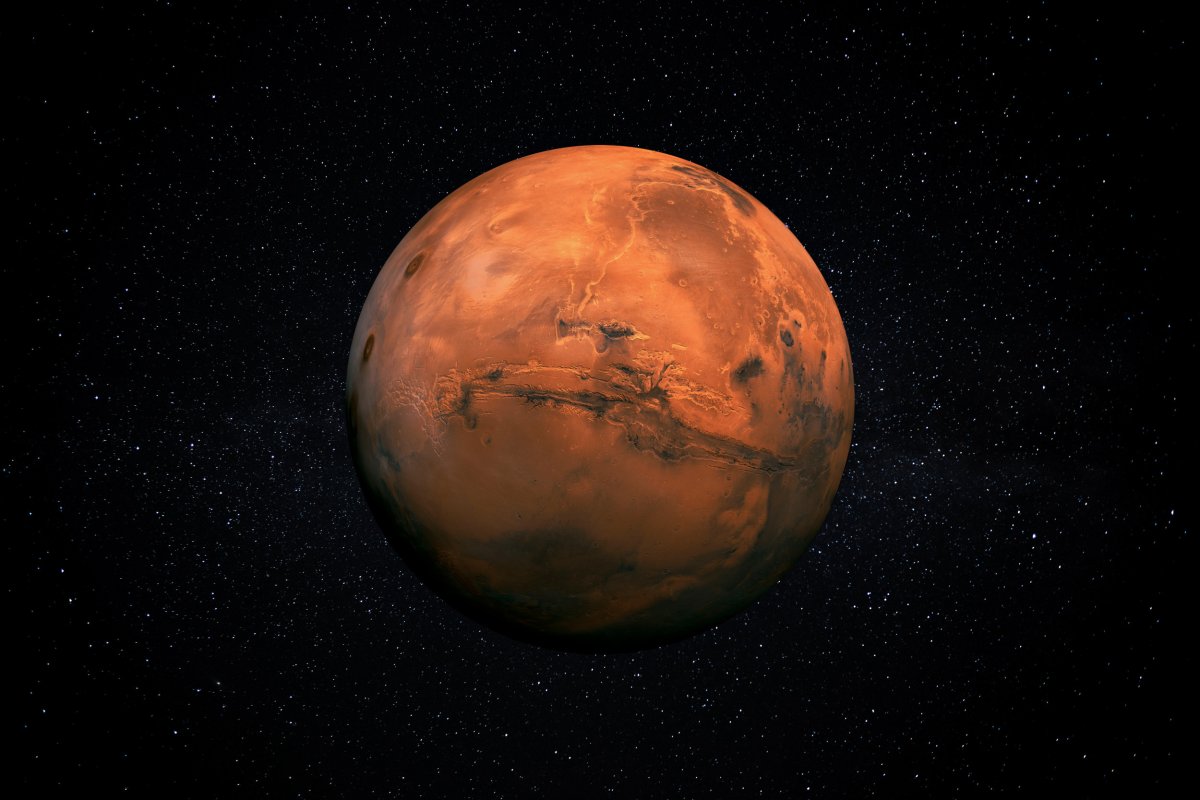Mars is popularly known as the Red Planet because of its distinct rusty color. The planet's color can even be seen with the naked eye from Earth, appearing in the night sky as though it were a red star.
Data from Google Trends show people are curious as to how the planet got its redness. The recent searches may be to do with a viral conspiracy theory on TikTok that falsely claimed Mars is red because humans destroyed the planet in a nuclear war.
The theory is false according to current science. Mars is red because of the way it was formed billions of years ago back when the solar system was young.
The red planet is red for two main reasons: its surface, and its atmosphere.
The surface
The surface of Mars is covered in iron oxide particles. Iron oxide is the same compound that gives rust its red color.
Mars has so much iron oxide on its surface because the planet is smaller and has weaker gravity than Earth does. When the planets were forming around four billion years ago, their surfaces would have been made of hellish oceans of molten rock and metals—including naturally occurring iron oxide.
Earth's larger size and stronger gravity meant this molten rock was under higher pressure in its early days, resulting in higher temperatures. This turned the iron oxide into liquid, and caused it to sink down to the planet's core, scientists believe.
Mars, being smaller, did not achieve the same temperatures. The iron oxide remained stable, didn't sink so much, and as a result is more spread out around the planet today.
This explanation dates back to a 2004 study by David Rubie and colleagues at the University of Bayreuth, Germany. John Murray, a planetary scientist at the Open University in Milton Keynes, UK, told the journal Nature at the time: "I do not know of any other explanation for Mars's rustiness."
The atmosphere
The second reason for Mars' redness is its atmosphere. Mars' atmosphere has been extensively analyzed by NASA's Curiosity rover which landed on the Red Planet in 2012. Scientists found that Mars' atmosphere at the surface consists of 95 percent carbon dioxide, 2.6 percent nitrogen, 1.9 percent argon, 0.16 percent oxygen, and 0.06 percent carbon monoxide.
Mars' atmosphere appears red because so much of the planet's iron oxide dust gets blown around in enormous storms.
These dust storms occur every year, and some are so big they cover areas the size of continents and can last for weeks at a time. Some, which are more rare, circle the entire planet and have caused NASA rovers to stop working.
Another reason Mars' atmosphere looks red is more complicated, and involves the way sunlight reflects off of the planet.
Mars' atmosphere is thinner than Earth's, which is one reason why humans wouldn't be able to survive there without a spacesuit. Due to this thin atmosphere, sunlight that is reflected away from Mars appears red due to a phenomenon known as Rayleigh scattering—or the lack of it.
Rayleigh scattering occurs when light hits particles that are smaller in size than the wavelength of that light, such as gas particles in the Earth's atmosphere. This process tends to scatter blue light and is the same reason the Earth's sky looks blue in the daytime.
On Mars there is less gas for the sunlight to interact with, so Rayleigh scattering does not occur as much. Conversely, on Mars there is a process called Mie scattering, in which sunlight hits particles that are roughly the same size as the wavelength of that light—such as iron oxide particles.
This process tends to deflect blue light less than red light, according to an explanation posted to StackExchange and cited to Eriita Jones of the University of South Australia.

Uncommon Knowledge
Newsweek is committed to challenging conventional wisdom and finding connections in the search for common ground.
Newsweek is committed to challenging conventional wisdom and finding connections in the search for common ground.
About the writer
To read how Newsweek uses AI as a newsroom tool, Click here.








